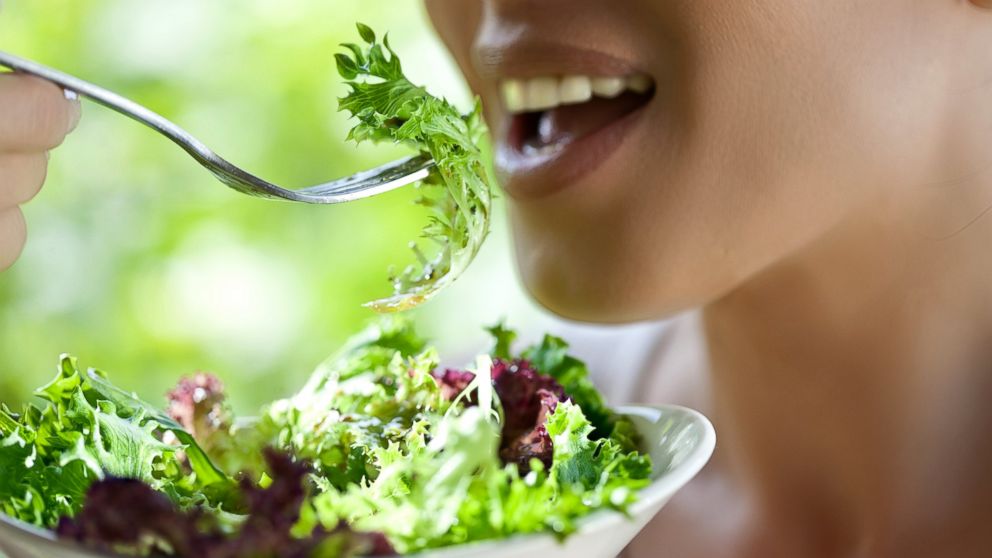5 Biggest Salad Mistakes You’re Making
How to make sure your salads are healthy and delicious.

— -- intro: I eat some type of salad nearly every day. It’s a go-to staple I really look forward to, and I love mixing it up. Some days I toss greens with pico de gallo, black beans, and guacamole, others involve grilled veggies, quinoa, and almonds, or roasted chickpeas and olive tapenade.
I enjoy creating new combinations, and to do so without throwing my meal off balance, I use a mix-and-match philosophy: I start with a greens and veggie base, add a lean protein, choose a good-for-you fat, include a small portion of healthy starch, season, and commence crunching.
When I talk to my clients about how they build salads, I often find that they’re doubling up in some areas, and missing out in others; and those imbalances can either prevent a salad from being slimming, or lead to missing out on key nutrients. Here are some common salad-building blunders, and the best ways to build a balanced bowl.
quicklist: 1category: 5 Biggest Salad Mistakes You’re Makingtitle: Too little or too much proteinurl:text: In my clients’ food journals I’ve seen plenty of salads with lots of veggies but no protein, and others with protein overload, like chicken plus cheese and hardboiled eggs. Protein is an essential salad component for several reasons—it boosts satiety, revs metabolism, and provides the raw materials for maintaining or building lean tissue, including both muscle as well as hormones, healthy hair, skin, and immune cells. But excess protein, beyond what your body needs, can prevent weight loss or lead to weight gain. In short, your body requires a certain amount of protein for maintenance and healing.
When too little is delivered those jobs don’t get done. But when your body has more than it needs, it has no choice but to send the surplus straight to your fat cells. For balance choose, a half cup of a plant-based protein, like lentils or beans, or 3 ounces of lean meat or seafood (that’s about the size of a smartphone). If you choose dairy, stick with ½ cup of organic cottage cheese, or one whole hardboiled organic egg and three whites. If you like to include more than one type, reduce the portions of each.
10 Biggest Myths About the Flu
quicklist: 2category: 5 Biggest Salad Mistakes You’re Makingtitle: Not enough veggie varietyurl:text: Greens and veggies are the typical salad base, but if you’re keeping your selections narrow (e.g. just spinach or romaine) you’re missing out on important veggie benefits. One Colorado State University also found that over a two-week period, volunteers who downed a broader array of the exact same amount of produce (18 botanical families instead of 5) experienced significantly less oxidation, a marker for premature aging and disease.
Another study, which evaluated more than 450,000 people and looked at their consumption of commonly eaten veggies found that regardless of quantity, the risk of lung cancer decreased when a wider variety of veggies were consumed. This may be because each plant contains unique types of antioxidants, nutrients, and natural cancer fighters, so a wider variety exposes your body to a broader spectrum of protection. To reap the benefits aim for at least two cups of veggies total, with lots of different colors, such as field greens, red tomatoes, purple cabbage, orange bell peppers, white onion…and keep changing up the variety.




